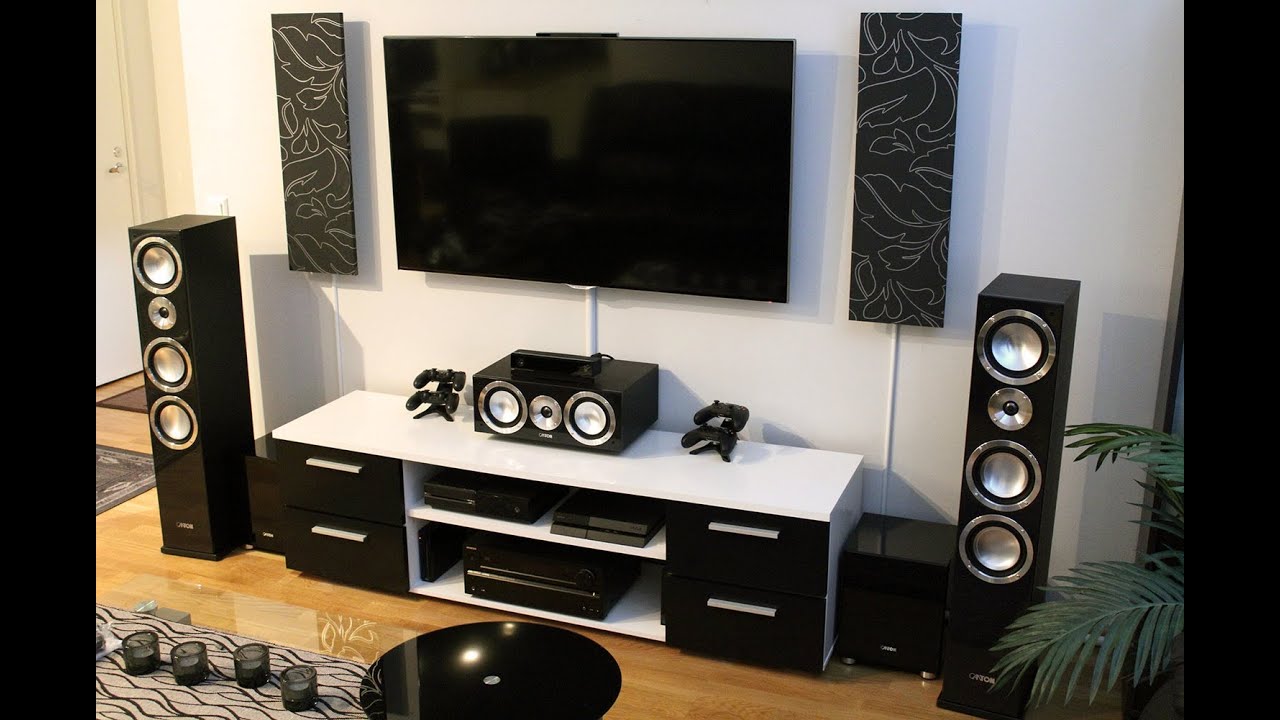Understanding Surround Sound: A Guide to Home Theater Audio
If you’re looking to create a truly immersive home theater experience, surround sound is an essential component. By placing multiple speakers around the room, you can recreate the sound of a movie theater and bring your movies and TV shows to life. But with so many different surround sound formats and speaker configurations available, it can be challenging to know where to begin. In this guide, we’ll take a closer look at surround sound and help you understand the basics.
What is Surround Sound?
Surround sound is a technique that involves placing multiple speakers around a room to create a more realistic and immersive audio experience. It uses a combination of speakers to produce directional and spatial sound, making you feel like you’re in the middle of the action.
How Does Surround Sound Work?
Surround sound works by using multiple speakers to create directional and spatial sound. The most common configuration for surround sound systems is 5.1, which means there are five main speakers and one subwoofer. The five main speakers include a center channel speaker, two front speakers, and two rear speakers. The subwoofer is responsible for producing the low-frequency sounds, such as explosions and bass-heavy music.
The center channel speaker is the most important speaker in a surround sound system because it reproduces dialogue and other critical sounds. The two front speakers are responsible for producing the main soundstage, while the two rear speakers are used for surround effects such as ambient sounds and directional effects.
Different Surround Sound Formats
There are several different surround sound formats available, each with its own strengths and weaknesses. Some of the most common surround sound formats include:
- Dolby Digital: Dolby Digital is one of the most popular surround sound formats and is commonly used in home theater systems. It supports up to 5.1 channels of audio and provides excellent sound quality.
- DTS: DTS is another popular surround sound format that is commonly used in home theater systems. It supports up to 7.1 channels of audio and provides high-quality sound.
- Dolby Atmos: Dolby Atmos is a newer surround sound format that uses object-based sound to create a more immersive experience. It supports up to 64 speakers and provides a more accurate representation of sound in a 3D space.
Choosing the Right Speakers
Choosing the right speakers is essential to creating a high-quality surround sound experience. There are several different types of speakers available, including:
- Floor-standing speakers: Floor-standing speakers are the largest type of speaker and provide excellent sound quality. They are typically used as front speakers in a surround sound system.
- Bookshelf speakers: Bookshelf speakers are smaller than floor-standing speakers and can be placed on a shelf or stand. They are typically used as rear speakers in a surround sound system.
- Center channel speakers: Center channel speakers are essential in a surround sound system because they reproduce dialogue and other critical sounds. They should be placed above or below the TV screen.
- Subwoofers: Subwoofers are responsible for producing the low-frequency sounds in a surround sound system. They should be placed in a corner or against a wall for the best sound quality.
Setting Up Your Surround Sound System
Setting up a surround sound system can be a daunting task, but it’s not as complicated as you might think. Here are some tips to help you get started:
- Choose the right room: The room you choose for your home theater should be as acoustically neutral as possible. Avoid rooms with lots of hard surfaces, such as tile or hardwood floors, as they can cause sound reflections and distortions.
- Plan your speaker placement: The placement of your speakers is critical to creating a high-quality surround sound experience. Follow the manufacturer’s recommendations for speaker placement, or use a speaker placement guide to ensure optimal sound quality.
- Connect your speakers: Connect your speakers to your AV receiver using the appropriate cables. Make sure you match the speaker wire to the correct terminals on the AV receiver and the speakers.
- Configure your AV receiver: Your AV receiver is the heart of your surround sound system. Configure it correctly to ensure optimal sound quality. Make sure you select the correct surround sound format, speaker configuration, and room size.
- Test your system: Once you’ve set up your surround sound system, test it to ensure optimal sound quality. Play a movie or TV show with a good sound mix and listen for any issues with the sound quality.
FAQs
Q: What is the difference between 5.1 and 7.1 surround sound?
A: 5.1 surround sound uses five main speakers and one subwoofer, while 7.1 surround sound uses seven main speakers and one subwoofer. The two additional speakers in a 7.1 system are rear side speakers.
Q: Can I use any speakers for my surround sound system?
A: You can use any speakers for your surround sound system, but it’s essential to choose speakers that match the size and power of your AV receiver.
Q: Do I need a subwoofer for my surround sound system?
A: Yes, a subwoofer is essential for producing low-frequency sounds such as explosions and bass-heavy music.
Conclusion
Surround sound is an essential component of any home theater system. By placing multiple speakers around the room, you can create a more immersive audio experience that makes you feel like you’re in the middle of the action. There are several different surround sound formats and speaker configurations available, so it’s essential to choose the right one for your needs. By following the tips and advice in this guide, you can create a high-quality surround sound experience in your home theater.


